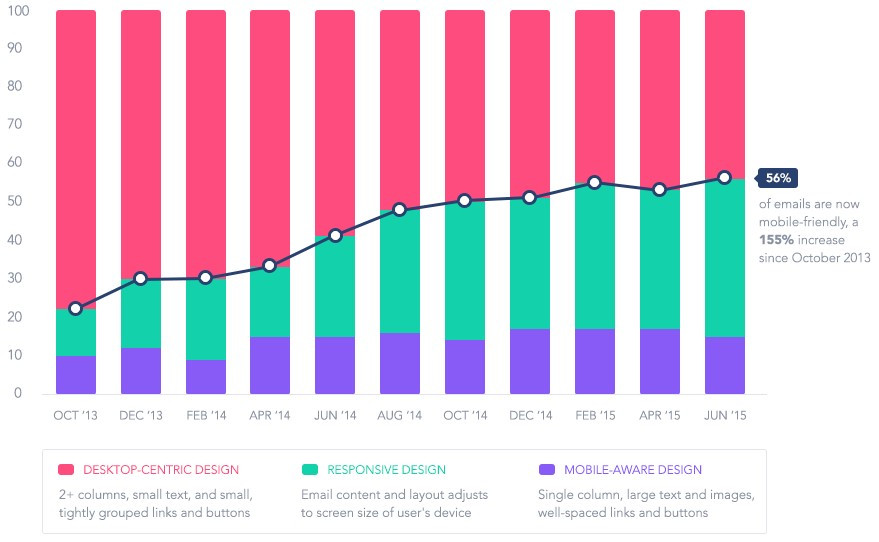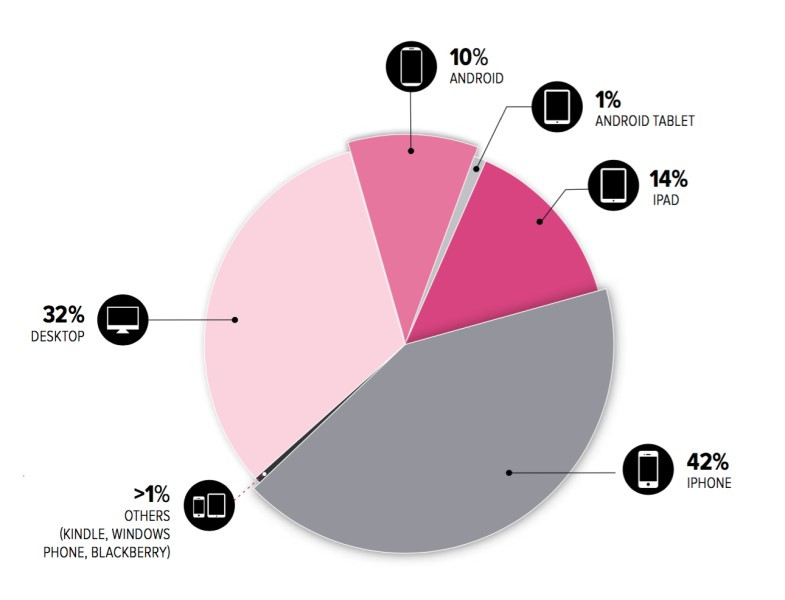Despite the hype surrounding social media and other ‘disruptive’ digital technologies, email remains the most effective, best value for money marketing technique available. No other medium offers marketers a potential ROI of 2500%, making investment into email shots a relatively safe bet.
PULL STATS:
-
The ROI on a well-run email marketing campaigns is estimated to be 2500%.
-
Marketers are realising a return of £30.52 per £1 spent on their B2C campaigns.
-
The Direct Marketing Association
But for every 1000 emails sent, more than 860 will not be opened – assuming the campaign is properly targeted.
So why do your prospects hit delete rather than click through? And when 23% or recipients do open their mail[, why don’t they buy? Why do prospects keep saying ‘NO’?
As you might expect, there are a number of factors your prospects consider before saying NO or YES. As such, your marketing team will need to address each of the following if they are to improve their chances of provoking a positive response from targets.
1. Inaccurate contact data
Many campaigns fall at the very first hurdle – getting emails into the prospect’s inbox. There are plenty of reasons that email is never delivered, but the most common is simply attaching the wrong address.
Low quality contact data contains out-of-date records, increasing the chance of a message bouncing, or being diverted to a ‘catch all’ address on the intended recipient’s domain. If a message is not delivered to the right person, the chances of it being opened (let alone resulting in a purchase) is virtually nil.
In reality, an undelivered message doesn’t even give the prospect a chance to say ‘NO’.
Marketers need to ensure that they have completely up-to-date contact details to give their campaign a greater chance of success. You should also use that information to further personalise their message, using the recipient’s name for instance, which has been shown to increase open and click through rates.
PULL STATS:
-
Personalised emails improve click-through rates by 14%.
-
Personalised emails improve conversion rates by 10%.
-
Personalised emails increase customer retention rates by 85%.
-
Aberdeen Group research
Nearly 75% of people expect personalisation based on online purchases and self-reported interests in their profile.
BlueHornet research
2. Irrelevant offers
The average business user receives 121 emails every day, not including unsolicited marketing messages (spam). Consequently prospects are becoming more discerning in the messages that they choose to read. Anything that they suspect is irrelevant, or of little interest will be skipped until later – or deleted immediately.
To ensure that marketing budget and resources are not wasted, it is absolutely vital that prospects are targeted with offers that are relevant to them. This means carefully segmenting the contacts database for every campaign, or purchasing access to specialist lists built around interests.
PULL STATS:
-
Well segmented campaigns have an open rate that is 14.444% better than a standard mailshot.
-
Well segmented campaigns have a click through rate that is 14.994% better a standard mailshot.
-
MailChimp research
3. Wrong recipient
It is possible to send messages that are both relevant and targeted, but which end up addressed to a person with little or no purchasing authority. You may be tempted to take a chance, sending these messages in the hope that the recipient will be able to convince their line manager to make a purchase.
But the reality is that spray-and-pray campaigns rarely pay off, the investment is effectively wasted. The prospect doesn’t say ‘NO’, but they are not empowered to say ‘YES’ either.
Marketers will need to build a contacts database that correctly identifies the key decision makers relevant to their product or service. And if you don’t have the relevant information to hand, you will need to identify a reputable database provider who can supply verified contact details for key decision makers.
4. Lack of trust
Even if you do manage to get a carefully tailored offer into the right recipient’s mailbox, the prospect may still say ‘NO’. In fact, if only 14.444% of marketing emails are opened, statistically there’s a very good chance that they will delete your message immediately.
Simple details, such as including a real name and return email address will help to inspire trust with readers, increasing the chances of them taking an offer seriously. Many spam filters automatically reject messages that lack a proper ‘From’ address, so including one is non-negotiable.
It is also vital that campaigns adhere to email marketing best practices to avoid damaging the company’s ‘sender score’. The sender score is used by many spam filtering services to identify and block unsolicited marketing emails – effectively an automated measure of trust.
If a business consistently sends unsolicited, poorly targeted messages, their sender score will reduce to the point that future mailings are automatically junked. And if automated routines do not trust your brand, why would your prospects?
5. Mobile unfriendliness
Mobile devices are now a crucial part of the email management process for both B2B and B2C prospects. Less than one third of emails were opened using traditional desktop or laptop PCs in 2015, 68% were read on mobile devices.

Source: Movable Ink
PULL STAT:
When emails do not display correctly on mobile, 42% will delete them.
BlueHornet research
Despite knowing that mobile-friendliness is vital for encouraging prospects to read emails however, many marketers appear to be ignoring that fact. Just 56% of emails feature responsive design for display on a mobile device, meaning that the other 44% of email marketers are throwing away half of their potential audience immediately.

All of your future campaigns needs to be designed with mobile display as the priority because this is where it is most likely to be read. Don’t make your prospects work hard to read your message on their smartphone – because they won’t. If you want them to act, meet them where they are – on their phone.
6. Poorly optimised landing pages
Getting a prospect to click through an email is only half the battle - marketers also need them to take action once they land on the related website. But a poorly crafted landing page is just another reason for prospects to say ‘NO’.
Where email messages have been personalised to the point of including the recipient’s name and interests, so too should the associated landing page. The prospect must also be in no doubt what their next action should be – if it is to request more information, or to make an actual purchase, the landing page must tell them what to do.
PULL STATS:
-
94% of in-house marketers surveyed see personalisation of the web experience as ‘critical to current and future success’.
-
Only 4% of organisations describe their website experiences as ‘very’ personalised. Around three quarters understand the importance of personalisation, but ‘don’t know how to do it’.
-
Monetate research
Again, mobile-optimisation will heavily influence your prospect’s actions. Fortunately 85% of brands now have mobile-friendly websites, making their decision not to mobile-optimise marketing emails all the stranger.
Litmus Research suggests that more than half (52%) of brands have failed to mobile optimise email and websites. Clearly this offers those brands who do mobile-optimise all of their marketing assets a reasonable competitive advantage.
Without a personalised, effective call to action, landing pages are just another excuse for prospects to say ‘NO’.
Conclusion:
In an age where customers’ inboxes are overloaded, most are actively looking for reasons not to read messages. It is vital then that marketers do everything they can to avoid their campaign becoming another of the instantly deleted emails.
The reality is that the vast majority of messages – even those that are opened – will not lead to a sale. Well-crafted, well-targeted messages will help to establish the credibility of your brand however.
And ultimately, precise targeting and relevant messaging is the key to whether a campaign succeeds or fails. From the quality of the contact data and the ability to create very specific segments, to the offers and language used in the email itself, relevance is absolutely crucial to every stage of a campaign.
Marketers also cannot afford to ignore mobile when designing a new mailshot. By ensuring both message and landing page are designed for display they can cater to the trend towards reading email on a smartphone and establish a slim advantage over their competitors who do not.
Putting these insights together, the checklist for an email campaign specifically designed to stop prospects saying NO should include:
-
Ensure that you have the most accurate, most comprehensive contact data possible so that you can create finely segmented target lists. Buy a subscription to a frequently updated database if your own list cannot be relied on.
-
Use your target lists to personalise every aspect of the message to the recipient’s needs and preferences.
-
Ensure that same personalised message is repeated on the landing page to create a consistent experience that builds trust with your readers.
-
Optimise your campaign for mobile first because prospects are most likely to read your message on their smartphone first.
[[form]]